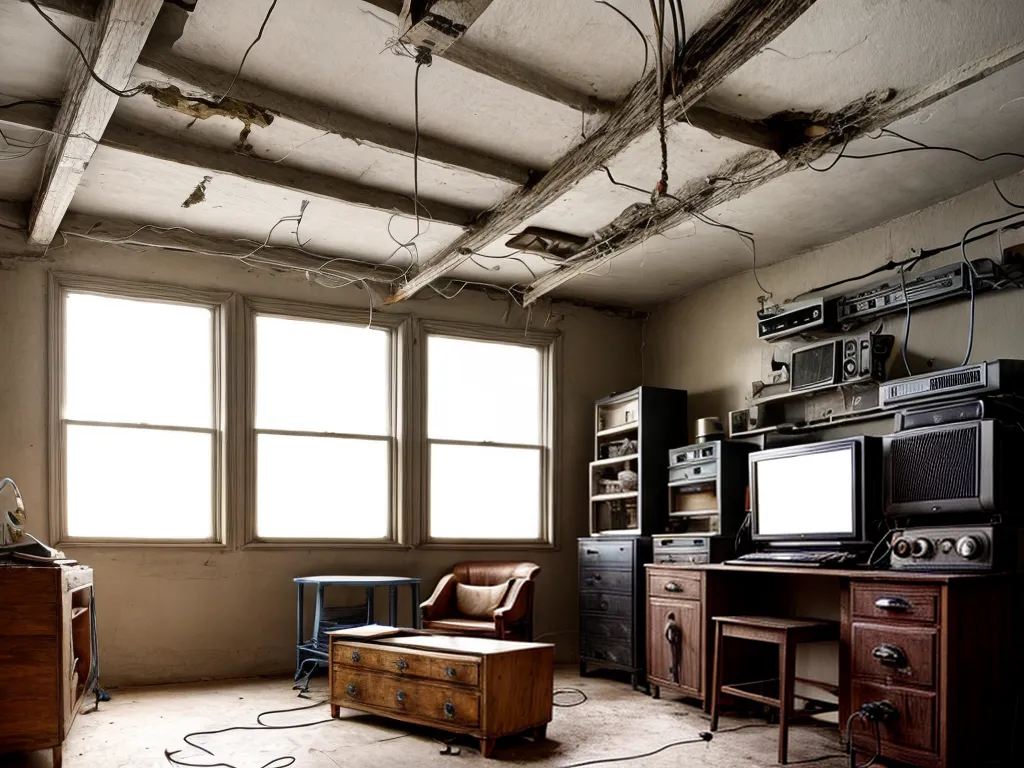
Introduction
Rewiring a home can be an intimidating task, but it doesn't have to be if you utilize obsolete technologies creatively. In this guide, I will walk through various approaches to reusing old materials and outdated methods in order to rewire my home safely, efficiently, and cost-effectively.
Assess Wiring Needs and Gather Supplies
The first step is to thoroughly assess the current wiring situation in my home. I need to identify:
- Which circuits need upgrading or replacing
- Where new outlets or lighting are needed
- What parts of the wiring can be reused
Once I have a full understanding of the scope of the project, I can start sourcing the needed supplies. Here are some of the obsolete technologies I plan to use:
- Old lamp cord or fabric-wrapped wiring: This can provide an antique look and be used for non-essential lighting or outlets. However, it may not meet modern safety codes.
- Knob and tube wiring: While no longer up to code, reusing existing knob and tube runs can cut down on labor. I need to be extremely careful not to overload these outdated circuits.
- Bakelite or ceramic fuse boxes: These antique boxes and fuses can be repurposed on small circuits, but a modern electrical panel is recommended for the home's main power.
- Vintage light fixtures: Energy-hungry incandescent or neon lamps can be swapped out for LEDs while maintaining a retro aesthetic.
I am being selective about what I scavenge from flea markets, salvage yards, and surplus stores. Safety is paramount, so I avoid anything potentially hazardous.
Rewiring Lighting Circuits
Updating the lighting is one of my top priorities for increased safety, efficiency, and functionality. Here are some approaches I plan to use:
Rerouting With Lamp Cord
For non-essential lighting like accent lamps or holiday lights, lamp cord can add a vintage look. I will carefully route the new wiring using the existing infrastructure:
- Remove old insulation to expose the original electrical boxes and conduit.
- Fish lamp cord through the conduit to each fixture location.
- Use ceramic tube connectors to join the lamp cord to the fixtures.
This provides aesthetics and minimizes disruption to walls. However, I must label these circuits as non-essential lighting only due to fire hazard.
Utilizing Vintage Light Fixtures
Many gorgeous, obsolete lighting fixtures can be updated with new wiring and LED bulbs:
- Rewire using new copper wiring and wire nuts, ensuring no exposed conductors.
- LED bulbs screw into old sockets but use a fraction of the energy.
- For safety, add inline fuses and use grommets where wiring enters metal bodies.
With these upgrades, I can use antique fixtures without overloading dangerous old wiring.
Extending Knob and Tube Circuits
While I want to limit knob and tube wiring, some runs are still in good condition. I can extend them by:
- Finding the existing fuse boxes the circuits run through.
- Tapping into the line with a junction box, using wire nuts to connect new Romex cable.
- Running the new wiring to the desired fixtures or switches.
By carefully oversizing the fuse, I can safely add a few updated fixtures to these antiquated lines.
Upgrading Receptacles and Outlets
Modern grounded outlets are essential for both safety and functionality. However, creative reuse can cut down on labor and costs.
Converting Two-Prong Outlets
For two-prong receptacles, I can add grounding by:
- Attaching a ground wire to the outlet mounting box if metal.
- Running the ground wire back to the main electrical panel.
- Changing the outlet to a three-prong receptacle and connecting the ground.
This is far easier than running all new wiring and lets me reuse existing runs. GFCI outlets can also add protection.
Using Vintage-Style Covers and Plates
While unsafe cloth-wrapped wiring is off-limits, I can reuse antique outlet covers and plates:
- Porcelain covers match old work boxes.
- Salvaged brass or wood plates fit my home's style.
- Sturdy thermoplastic matches vintage colors.
With a fresh coat of paint, these peripheral touches retain the old-timey aesthetic.
Extending to New Locations
For adding receptacles in new locations, I plan to:
- Find the nearest existing outlet.
- Turn off power and remove the cover plate.
- Tap into the wires with a junction box.
- Run new wire and add the desired outlet.
This lets me strategically add modern grounded outlets without rewiring entire rooms.
Utilizing Antique Infrastructure
Beyond actual wiring, reusing other obsolete electrical components saves massive effort. Here are some approaches:
Repurposing Conduit
Where existing metal conduit is sturdy, I can carefully feed new wiring through. This avoids new drywall work or drilling. However, I need to ensure insulation does not contact the interior surface.
Cleaning and Reusing Boxes
Old ceramic and metal boxes can be scrubbed clean and reused as long as they are structurally sound. I will secure them and install new covers.
Upgrading Fuse Boxes
For homes still relying on antique fuse boxes, I recommend upgrading to a modern breaker panel. However, the existing boxes like bakelite can be repurposed to distribute non-essential circuits.
This maintains the vintage look while ensuring major appliances and lighting are on modern circuit breakers.
Conclusion
Rewiring a home utilizing obsolete technologies takes creativity and care. However, reusing existing infrastructure and antique fixtures allows me to rewire my home efficiently and cost-effectively while maintaining its historic charm. With attention to detail and adherence to safety codes, these obsolete technologies can have an exciting second life powering my home's systems. Some limitations exist, but the end result is well worth the effort.